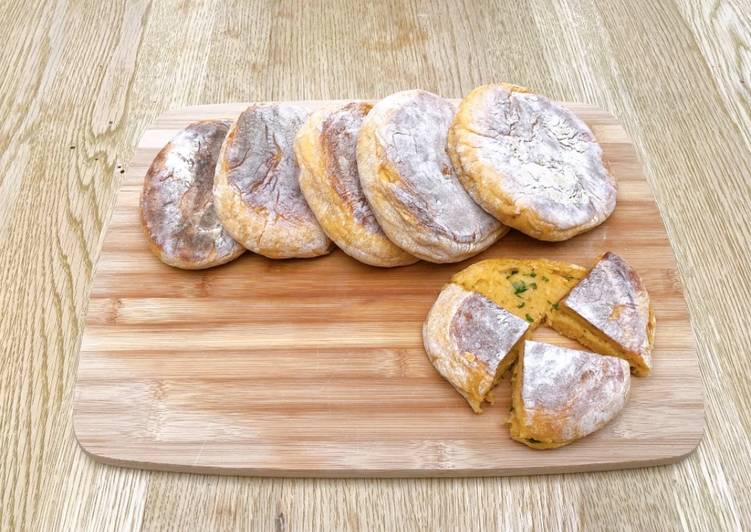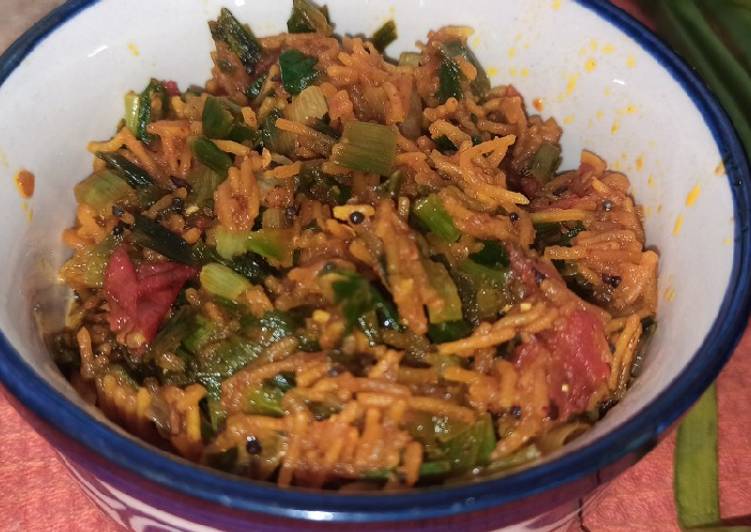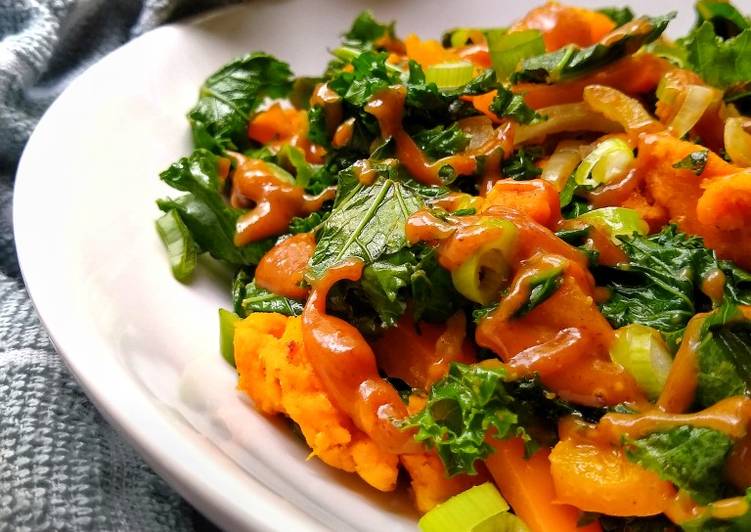
Hey everyone, I hope you’re having an amazing day today. Today, I will show you a way to make a distinctive dish, bolo do caco (madeiran bread). It is one of my favorites. For mine, I’m gonna make it a little bit unique. This will be really delicious.
Bolo do caco is a typical Madeiran bread, made from flour, sweet potatoes, yeast, water and salt. It has a circular and flat shape. It has a hard but thin crust and a soft, airy crumb, as a result of its baking directly on a hot surface, and a slightly sweet flavor and aroma derived from the sweet potato. Madeira is well known for its gastronomy.
Bolo do caco (Madeiran bread) is one of the most popular of current trending meals on earth. It is easy, it is quick, it tastes delicious. It’s appreciated by millions daily. Bolo do caco (Madeiran bread) is something which I’ve loved my entire life. They’re nice and they look fantastic.
To begin with this recipe, we have to first prepare a few ingredients. You can cook bolo do caco (madeiran bread) using 8 ingredients and 14 steps. Here is how you cook it.
The ingredients needed to make Bolo do caco (Madeiran bread):
- Prepare 375 g Sweet potato
- Prepare 375 g Bread flour
- Take 9 g Active yeast
- Prepare 220-230 ml warm water (boil sweet potato)
- Prepare Salt
- Get Butter 1 small chunk
- Get 2 cloves Garlic
- Prepare Flat parsley
The "Bolo do Caco" bread is a prime exemple of Madeiran food. Despite the name "bolo" [cake], this is actually a type of bread. The "Bolo do Caco" bread is a food that establishes a link between Madeiran bread and the bread which the Hebrew people baked, as stated in the Old Testament. The Bolo do Caco is a shard wheat bread typical of the area of Madeira that may be discovered each in Madeira and within the island of Porto Santo.
Steps to make Bolo do caco (Madeiran bread):
- Boil sweet potato in slightly salted water for 20 minutes.
- Remove the softened sweet potato from the water and keep the water for later use.
- Mash the sweet potato and let it cool down.
- Wait until the water that boil sweet potato to cool down to be warm and get 150ml water to mix with yeast. Leave the yeast mixture aside for 10 minutes.
- Add the yeast mixture into the mashed sweet potato and mix well. And then add in a tiny salt in.
- Mix the mashed sweet potato with the flour.
- Add in 80ml sweet potato water gradually in the dough and keep kneading until the texture shown as picture.
- Sprinkle a bit flour on the top and cover the dough by a tea towel or clingfilm and let the dough do the first 40-minute fermentation.
- When the dough is double sized, it’s ready for the further step.
- Sprinkle some flour and divide the dough into 6 small doughs. Sprinkle more flour on the top of the doughs and cover by a tea towel for 2nd 15-20 minute fermentation.
- Add mashed garlic, chopped parsley and salt into a soften butter and mix them well. And then put it into the fridge.
- Heat the pan and put one dough in. Flat the dough a bit and fry one side for 5-10 minutes (depends on the size). Make sure both sides turn into golden brown and get the hollow sound when patting the bread.
- Cover the ready cooked breads by a clean tea towel.
- When serve the bread, just slice the bread and put some garlic butter inside of the bread like a sandwich and then cut the bread into quarters. Enjoy.
The "Bolo do Caco" bread is a food that establishes a link between Madeiran bread and the bread which the Hebrew people baked, as stated in the Old Testament. The Bolo do Caco is a shard wheat bread typical of the area of Madeira that may be discovered each in Madeira and within the island of Porto Santo. It's consumed as enter, monitoring or as principal dish. It's made from flour, yeast, water and salt. Bolo do Caco - a traditional bread of Madeira.
So that’s going to wrap this up with this exceptional food bolo do caco (madeiran bread) recipe. Thanks so much for your time. I am sure that you can make this at home. There is gonna be more interesting food at home recipes coming up. Remember to save this page in your browser, and share it to your family, friends and colleague. Thanks again for reading. Go on get cooking!

